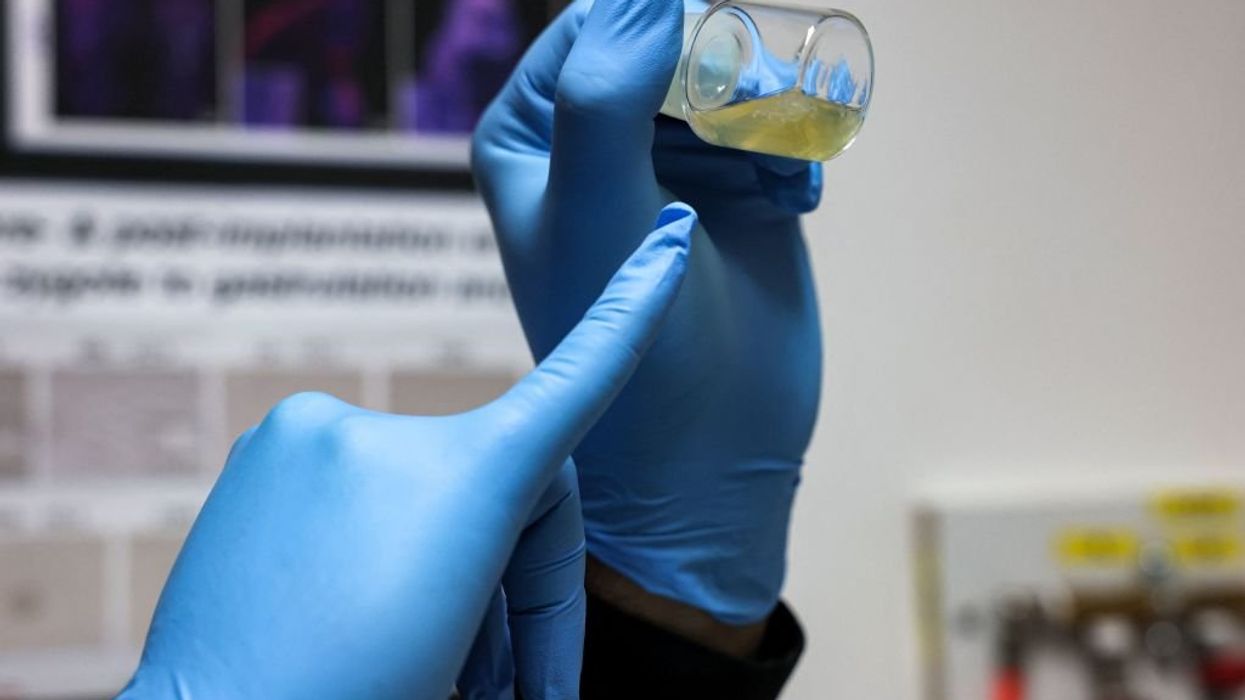
Photo by AHMAD GHARABLI/AFP via Getty Images

Scientists at the University of Cambridge and the California Institute of Technology appear to have successfully accomplished what abortionists and libertines have only managed in a piecemeal fashion over recent decades: They have severed reproduction from fertilization.
Researchers have produced synthetic human embryos using stem cells, bypassing the need for sperm or eggs altogether, reported the Guardian.
While they were meddling with mice, a multi-institutional team of researchers, led by Chinese reproductive engineer Zhen Lu at the State Key Laboratory of Neuroscience in Shanghai, reportedly generated synthetic embryos using monkey embryonic stem cells, then successfully initiated pregnancies in monkeys via a process resembling in vitro fertilization.
Rather than abandon rodents to retread Lu's monkey business, Żernicka-Goetz and Hanna endeavored to tinker with the world's top primate.
Żernicka-Goetz detailed her latest work in a plenary address Wednesday before the International Society for Stem Cell Research in Boston, noting, "We can create human embryo-like models by the reprogramming of [embryonic stem] cells."
Żernicka-Goetz described cultivating human embryos beyond the equivalent of 14 days of development for a natural embryo, when the synthetic embryo "reached the beginning of a developmental milestone known as gastrulation, when the embryo transforms from being a continuous sheet of cells to forming distinct cell lines and setting up the basic axes of the body. At this stage, the embryo does not yet have a beating heart, gut or beginnings of a brain, but the model showed the presence of primordial cells that are the precursor cells of egg and sperm," noted the Guardian.
Żernicka-Goetz called the dehumanized process and its monstrous result "beautiful," adding, "Our human model is the first three-lineage human embryo model that specifies amnion and germ cells, precursor cells of egg and sperm."
Janet Rossant, a developmental biologist and International Society for Stem Cell Research steering committee member, told the MIT Technology Review that such synthetic embryos, if equipped with all the right cell types, could possibly survive to become viable humans.
Żernicka-Goetz stressed to CNN that "they are not human embryos. ... They are embryo models, but they are very exciting because they are very looking similar to human embryos and very important path towards discovery of why so many pregnancies fail, as the majority of the pregnancies fail around the time of the development at which we build these embryo-like structures."
Żernicka-Goetz's previous synthetic mouse embryos were virtually indistinguishable from the real thing after eight days, according to Quanta magazine.
The difference between an embryo model and the real thing, according to Christine Mummery, developmental biologist in the anatomy and embryology department at Leiden University Medical Center, is that they have "not been derived by fertilization."
While it is illegal to implant these embryos in a woman's womb, the novelty of the stem cell-derived embryos presently affords scientists leeway they would not otherwise have if dealing with embryos resultant of sperm-and-egg fertilization.
"Unlike human embryos arising from in vitro fertilization (IVF), where there is an established legal framework, there are currently no clear regulations governing stem cell derived models of human embryos. There is an urgent need for regulations to provide a framework for the creation and use of stem cell derived models of human embryos," said James Briscoe, associate research director at the Francis Crick Institute.
Robin Lovell-Badge, the head of stem cell biology and developmental genetics at the Francis Crick Institute, told the Guardian, "If the whole intention is that these models are very much like normal embryos, then in a way they should be treated the same. ... Currently in legislation they’re not. People are worried about this."
IVF-sourced embryos are presently subject to the ethics-informed "14-day rule."
Professor Martin Pera with the Jackson Laboratory noted in the journal Development that the 14-day rule, whereby the in vitro culture of the human embryo is not allowed to proceed beyond day 14 of embryonic development in various jurisdictions, was the result of bioethical discussions that took place in the early days of the IVF field in the 1970s, especially after the first successful birth of a British child conceived by IVF.
While the prevailing wisdom appeared to be that it was ethically questionable to conduct experiments on human beings during their embryonic stage of development, according to Pera, the four key arguments advanced in support of a 14-day limit on embryo culture were as follows:
While regulatory bodies at American universities and other research institutions in the U.S. allegedly adhere to the "14-day rule," the International Society for Stem Cell Research issued a recommendation in its 2021 guidance that the possibility of increasing the permitted culture time be considered by "national academies of science, academic societies, funders, and regulators."
NPR reported that the creation of so-called embryiods, living entities made from human stem cells that are increasingly complex and comparable to human embryos, has "added pressure to extend the rule so scientists could compare these new entities with naturally conceived embryos."
Dr. Ildem Akerman, from the University of Birmingham, told the BBC, "These findings suggest that we would soon develop the technology to grow these cells beyond the 14-day limit, with potentially more insights to gain into human development. ... Nevertheless, the ability to do something does not justify doing it."